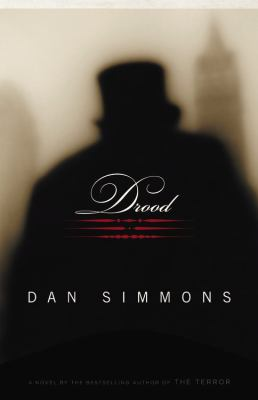I have this thing about food in books. I don’t even know if I can adequately describe it; I just love when characters are eating bizarre (to me) food. I’m not sure why this is, but if yesterday’s Eleventh Stack post (“Sorry, Not Sorry”) didn’t prove anything, everyone has his or her own quirks, literary or otherwise.
Anyway, I recently listened to the audio book of Drood by Dan Simmons, and suffice it to say, there are some rather entertaining gustatory passages in this novel narrated by fellow novelist Wilkie Collins, and a good friend of Charles Dickens. In this scene, Collins is having “supper at a club to which [he] did not belong but at which [he] had guest privileges.”
“I settled down to my solitary meal. I enjoyed coming to this club because of how the chef here prepared lark pudding, which I considered one of the four great works produced by my present age. Tonight I decided to dine relatively lightly and ordered two types of pate, soup, some sweet lobsters, a bottle of dry champagne, a leg of mutton stuffed with oysters and minced onions, two orders of asparagus, some braised beef, a bit of dressed crab, and a side of eggs.”
Wilkie considers this to be a “modest repast.”
He then goes on about the culinary skills of Catherine Dickens, Charles’ wife.
“…one of the few things I had ever liked about Dickens’s wife was her cooking – or at least the cooking she oversaw at Tavistock House, since I had never seen the woman actually don an apron or lift a ladle. Years ago Catherine Dickens had (under the name Lady Maria Chatterbuck) brought out a volume of recipes, based on what she served regularly at their home at Devonshire Terrace, in a book called What Shall We Have For Dinner? Most of her choices were visible on my table here this evening, although not in such plentitude or with an equal glory of gravies (I consider most cooking as simply a prelude to gravies) – as her tastes had also run towards lobsters, large legs of mutton, heavy beefs, and elaborate desserts. There were so many variations of toasted cheese in Catherine’s volume of recipes that one reviewer commented –
“No man could possibly survive the consumption of such frequent toasted cheese.”
(OK, two things. I think I could survive quite well by consuming toasted cheese, thank you. And, secondly, I cannot possibly be the only one who didn’t know that Charles Dickens’ wife published a cookbook, can I?)
[Note to self: finish your blog post before jumping down that occupational hazard of a rabbit hole of trying to find a copy]
Half a page later, and with Collins still at the table eating the same supper:
“This night, I could not decide between two desserts, so – Solomon-like – I chose both the lark pudding and the well-cooked apple pudding. And a bottle of port. And coffees.”
Even though I was fairly certain I wouldn’t be trying this at home in my vegetarian/gluten-free kitchen, I couldn’t resist finding out what consisted of lark pudding. According to this post from the blog Victorian Gems, this delicacy includes “one pound of rump steak, three sheeps kidneys, one dozen larks, nicely picked and drawn, and all well seasoned with two of salt and one of pepper, and one dozen oysters blanched.”
Yum. Save room for dessert, indeed.
No wonder Wilkie Collins had troubles with gout. I mean, obviously we know a lot more today than our Victorian friends did back then about the connection between food and health but … still.
Bon appetit.
~ Melissa F.








